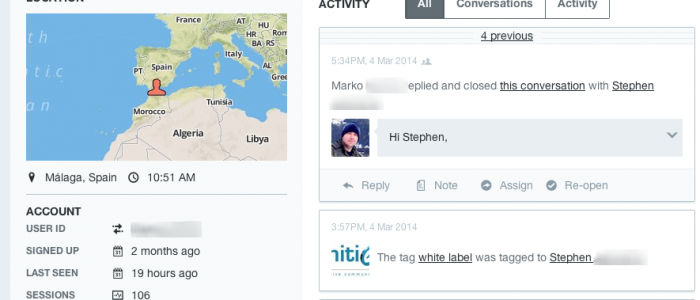When we started our company 7 years ago, we needed a help desk software, because answering to loads of emails via regular email was not too effective. At that time there were just a few software we could use. We chose Deskpro and it did the work well. But their latest update made our work difficult. The agent interface was massive, there were lots of information on the screen which we didn’t need, and the important part (message from our operators) could only be seen in a little corner on the screen. The interface of our public help desk (knowledgebase, help pages) became too complicated, and after a redesign of our main page we couldn’t integrate it in the proper way. Also, it looked very bad from mobile devices.
Another problem was that our registered customers had to log in when they wanted to contact us, sometimes they created a different username because they didn’t realise that they could use their existing operator username and password. This made difficult for us to track our operators effectively.
So it was time to change our Help Desk. For weeks, we searched for alternatives. We have checked some big players (like Zendesk), and some smaller ones (like Freshdesk, Helpscout and others). By the way did you know that Freshdesk is developed in India? 
Anyway…then, we bumped into Intercom. Intercom’s approach is completely different than other solutions. The main difference is that they can fully integrate into your system. When our help desk agents get a message from an existing operator of ours, they immediately see how many hotspot locations the user operates, how many routers are installed, what plan he is using, etc. They don’t have to look up the user each and every time which saves a lot of valuable time. We can even see the country where they came from, with the local time so we won’t disturb them with phone calls while they are sleeping  This feature is very valuable for a company who deals with international clients.
This feature is very valuable for a company who deals with international clients.
Another difference is “conversations” versus “tickets”. Using a “ticketing system” (when a case is assigned to a ticket number so its easier to track) has its advantages, however it makes a company look like working with robots. Instead, we can use regular email conversations and we can still track messages (as emails are turned into “conversations”). And our partners get a personal message every time.
Intercom also offers more than just a Help Desk software, it’s a powerful marketing tool too. It helps us to send messages to the right users in the right time. We can segment our users as “Who are the ones that are registered but didn’t use the system?” or “Who are the ones who logged in within a month?” or “Who are the ones who installed a router but had no transactions?” etc. And when we get the right segment we can even display a popup conversation box for them in the control center so they can immediately see it when they log in and can reply easily.
So after a month of our trial, we decided to use Intercom in the future. But there were important things we missed. Intercom is great for existing users but what about the new ones who didn’t decide to sign up? They can only send us an email (or a message through a contact form). But what about live chat? What about a great looking Help Desk page with knowledge base and forums? Surely, other help desk softwares like Zendesk have these all integrated, but after we decided to use Intercom, we didn’t want to use an other software which offers the same feature. We just wanted the additional features.
So how did we solve this problem? You can find it out soon, in our next blog entry.




What about: snapengage ?
Not affiliated with them, just happen to know the CTO.
I remember to had a live chat with them when i searched for a chat addition for Intercom. We’ve ended up using LiveChatInc because some key feature was missing from Snapengage, but that’s the second part of the story (which is coming soon in a new blog post